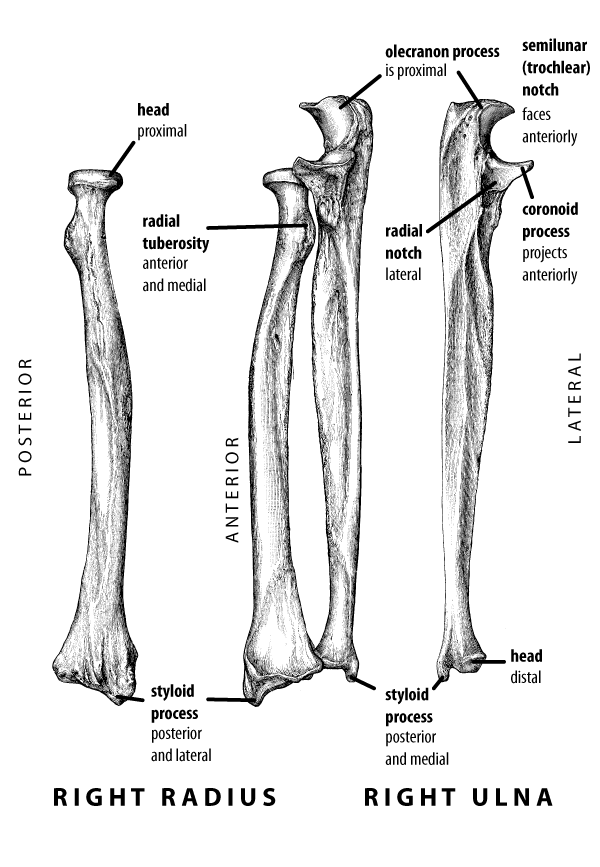Radius and ulna
The radius and ulna are the two bones of the lower arm. Rotation of the wrist is actually accomplished by a rotation of the radius around the ulna. The radius is on the lateral side of the arm, while the ulna is medial.
The radius can turn at the elbow joint, and therefore the part of the radius that articulates with the humerus, called the radial head, has a rounded circumference that allows it to rotate in contact with the proximal ulna. The radius has a large tuberosity on the front, toward the medial side.
The proximal ulna has a large notch bounded by two bony processes. The olecranon processfits into the olecranon fossa of the humerus, while the coronoid process fits against the anterior surface of the humerus when the elbow is flexed. Between these two processes, a half-moon shaped notch, called the semilunar or trochlear notch, fits strongly around the trochlea of the humerus, creating a stable and strong hinge joint to counter the weak but rotating joint of the radius. The proximal ulna has a notch for the radial head, called the radial notch, which is on the lateral side of the ulna.
At the distal end, most of the proximal wrist joint is occupied by the distal radius, with the distal ulna free to rotate relative to the wrist. Both bones have pointed styloid processes, which extend on the medial and lateral sides of the wrist.
